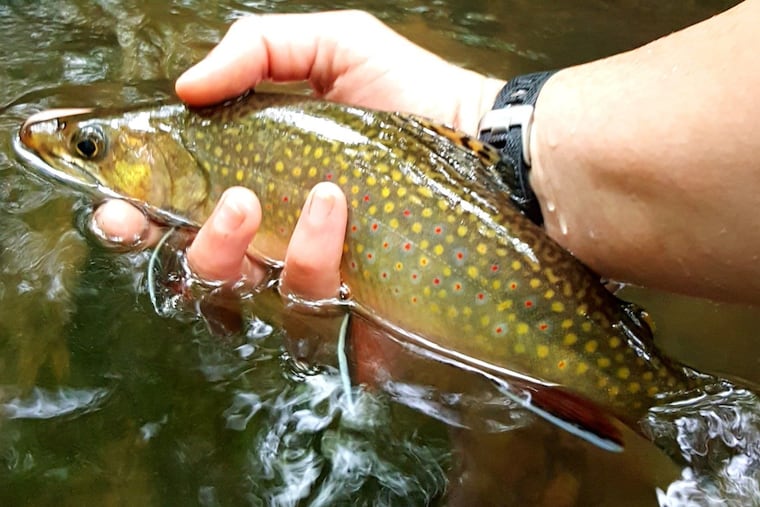N.J., Pa., N.Y. join forces to protect dwindling brook trout
A partnership among all three states aims to restore the Eastern brook trout through a $3.5 million federally funded program.

The Eastern brook trout is the official state fish of New Jersey, Pennsylvania, and New York.
But the species, known to anglers as brookies, has experienced a significant decline as its habitat has gotten developed, the waterways warm, and sediment flows into creeks. The Eastern brook trout are now hemmed into a fraction of their native range.
On Wednesday, officials announced a partnership among all three states to help restore the species with $3.5 million funded through the America the Beautiful Challenge grant program, a $122.5 million conservation effort launched in 2021 by President Joe Biden.
The New Jersey Department of Environmental Protection (N.J. DEP) will lead the project, which entails removing barriers such as dams and culverts, improving habitat, restoring floodplains, and helping with upstream stressors that lead to higher water temperatures. The money comes from a $3.5 million National Fish and Wildlife Foundation America the Beautiful Challenge grant.
The health of the species is an indicator of overall water quality.
“This species holds a special place for anglers and anyone who cares about the health of our cold-water streams and lakes,” said Shawn LaTourette, commissioner of the N.J. DEP.
New Jersey Fish and Wildlife, which falls under the N.J. DEP, will work with the Pennsylvania Fish and Boat Commission, the New York State Department of Environmental Conservation, Trout Unlimited, the Eastern Brook Trout Joint Venture, the Northeast Association of Fish and Wildlife Agencies, the Wildlife Management Institute, and the U.S. Fish and Wildlife Service.
Startling decline
As an example of the decline in wild, unstocked Eastern brook trout, a report from the N.J. DEP report said that the species has been completely extirpated from 94 subwatersheds in the state, or a loss of over 62% of its original range.
Currently, wild brook trout inhabit 120 small streams mostly cradled in forested hills and mountains of North Jersey — but only one stream in South Jersey.
The report states that brook trout have completely vanished from more than 20% of their historic eastern range from Maine to Georgia. They have been eliminated from all lake populations except for a few in Maine.
A paper by the Eastern Brook Trout Joint Venture said it’s estimated that only 8% of subwatersheds that historically supported wild brook trout are classified as intact enough to support the species. That has forced the fish to the cleanest and coldest headwater streams.
As a result, most states rely on robust trout-stocking programs to replenish fish several times a year.
Who’s involved?
“This initiative is fundamentally about aligning implementation resources with identified projects to help conserve a priority species for all three states and our partners,” said Tim Schaeffer, executive director of the Pennsylvania Fish and Boat Commission. “In so doing, we are affirming a commitment to landscape-level conservation that capitalizes on unprecedented partnerships here in the Northeast.”
Steve Hurst, chief of fisheries for the New York Department of Environmental Conservation, said the grant “marks a new phase.”
There is an existing, separate Eastern Brook Trout Joint Venture stretching from Maine to South Carolina that includes a network of fisheries managers, scientists, nonprofits, and state, local, and federal agencies. New Jersey, Pennsylvania, and New York officials are part of that venture.
But Amy Wolfe, director of Trout Unlimited’s Northeast Coldwater Habitat Program, said this is the first time the three states have worked together directly as a unit. A committee is currently prioritizing sites and identifying potential projects. But a likely focus could be the northern part of the Delaware River Watershed, including the Catskills in New York, the Poconos in Pennsylvania, and the Highlands region in New Jersey.
“This is great news,” Wolfe said. “We have been working together the past year to move forward this first-ever tristate initiative to focus on improving and reconnecting cold-water trout habitat.”